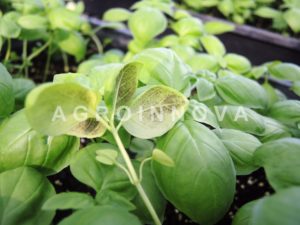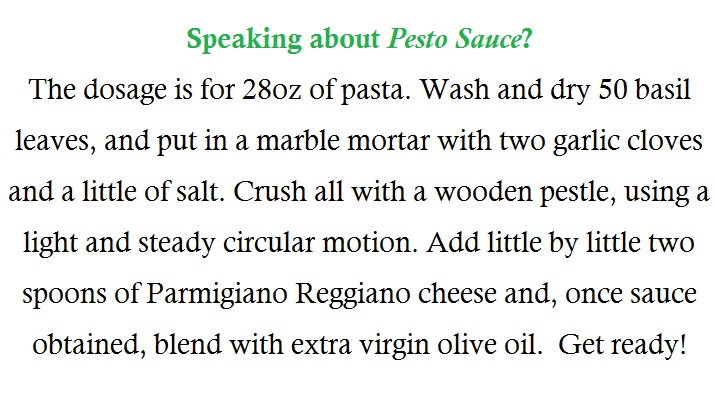
As you know, sweet basil (Ocimum basilicum L.) is an economically important herb crop in several Mediterranean regions, especially in Italy, the United States of America and in many other regions of the world. This popular herb is used both as a fresh and dried food spice, and in traditional medicine. In Italy, most of the basil production takes place in the Riviera Ligure, and “Genovese Gigante” is the most appreciated variety for fresh consumption. Of course, it is also fundamental for pesto production.
So, what is wrong?
A disease was observed for the first time in Uganda in the 1930s and reported as Peronospora sp (plant pathogens, one of the genera causing downey mildews). Later, in the 2000s, it is as responsible of serious losses in several countries, starting from Switzerland and moving to Italy, Belgium, France, USA, Cuba, and Hungary.
Such broad diffusion of the pathogen, named Peronospora belbahrii, has been probably favored by the fact that the pathogen is seed transmitted. In certain countries, such as Italy, environmental conditions, i.e. high RH and warm temperatures, very favorable to the development of the disease characterized the year 2014 with very severe epidemics and heavy field losses.

Italian producers called us when they noted P. belbahrii in Liguria in 2003 compromising major and minor productions. At the beginning, our work was to evaluate the possibility of adopting disease management programmes focused on a more flexible use of systemic chemicals fungicides in order to reduce the risk of the presence of residues at the end of each production cycle (article here).
Challenges of disease management
Nevertheless, the management of such disease is not easy, for several reasons. First, being basil a minor crop, the number of chemicals registered for use was relatively low and it is not increased much since we started, for economic reasons. Moreover, the scalar type of harvest complicates the use of chemicals in the field.
Therefore, by considering that the pathogen is seed transmitted, seed treatment could represent one possible management strategy. Considering a fully Integrated Pest Management (IPM) approach, particularly for organically managed crops, among cultural practices that need to be adopted, the use of pathogen-free seed and seed dressing are very important preventative measures. Moreover, the availability of non-chemical seed treatment strategies is becoming relevant and interesting for many farmers. Basil growers need to get acquainted with the first symptoms of downy mildew, in order to quickly identify the pathogen and adopt the most appropriate management strategies.
Read full journal article: Management of downy mildew of sweet basil (Ocimum basilicum) caused by Peronospora belbahrii by means of resistance inducers, fungicides, biocontrol agents and natural products

This blog post was co-authored with Andrea Masino, communication and media manager at AGROINNOVA.
Maria Lodovica Gullino
Latest posts by Maria Lodovica Gullino (see all)
- Agricultural innovation: Saving one sweet basil - 11th August 2016